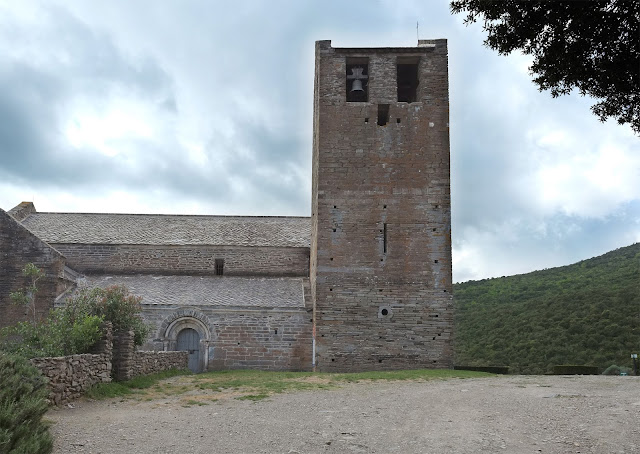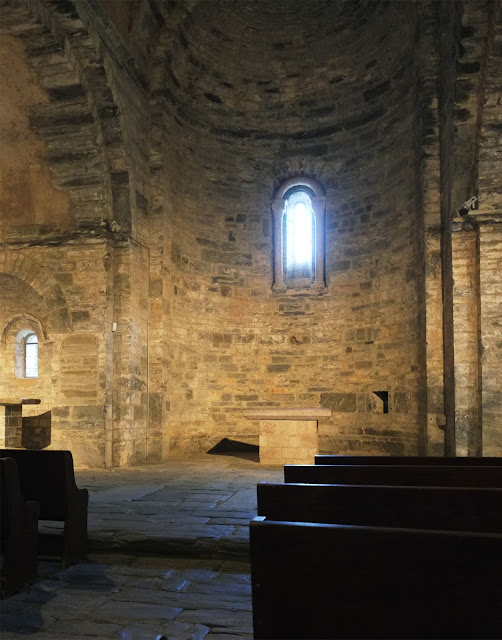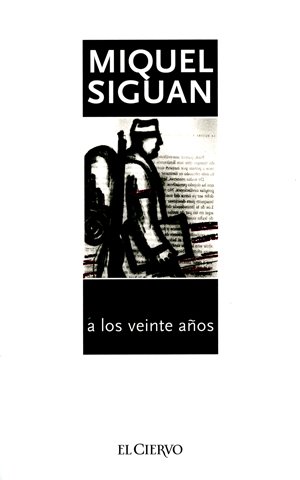スペイン・ロマネスクの旅(21)
サント・マリー・ド・セラボナ修道院教会(Priory of Sainte-Marie de Serrabona)
(for summary in English please see the end of this article)
写真(1) Road to the Pirory of Sainte-Marie de Serrabona
セラボナ(Serrabona)
教会への道は、Serrabona(カタルーニャ語で「善き山」)の名前にそぐわぬ、荒れた不毛の土地で、なぜ「善き山」なのかと誰もが首をかしげるような風景がつづく。
Zodiaque社のロマネスク手引書Roussillon Romanには、19世紀半ばころまではこの地域はいまほど乾燥した気候ではなく、山の湧き水などを引けば水利に困ることもなかった。まさしくSerrabonaは「恵みをもたらす善き山」であったのだ、という趣旨の記述がある。
そうだとしても、Serrabonaが自然の恵みをもたらしてくれる有難い山である一方で、村人たちにとっては神聖なうやまうべき山でもあった、とは考えられないだろうか。周辺にドルメン(巨石の墳墓)がいくつか残っているのを見ると、巨石・巨岩信仰ひいては山岳信仰につながる伝統を持つ地方ではないか、と思われる。
キリスト教到来以前の地場の聖地が、Santuarioとスペイン語で呼ばれるキリスト教の聖地になり、そこに教会が築かれた例を、私はいくつも目にしている。現代のわれわれにとっては、ただ不毛の地としか映らないSerrabonaだが、むかしむかしの村人たちは、「善き山」にうやまうべき聖なるものを見ていたのではあるまいか。
写真(2) Church Building(view from the North)
現存する建物は、12世紀に献堂されたロマネスク教会を修復したものである。これは北方向から眺めた写真で、教会への入口は右手方向(西)にある。
回廊(Cloister)
ふつう回廊は四辺形をしているものだが、セラボナの場合は、廊下のような一辺だけの回廊で、右手(南方)は深い谷に面している。円柱と柱頭の石材は大理石。奥に見えるのが教会への入口(翼廊に通じている)。
教会を十字架の形に比すれば、縦柱が身廊で横柱が翼廊にあたる。そしてふつう教会への出入り口として、いわば十字架のねもとにあたる箇所に扉を設け、身廊に通じる形をとるものだが、セラボナの場合は回廊から右の翼廊へ向かう設定になっている。回廊の柱頭彫刻は、ライオンを刻んだものが圧倒的に多い。人物像には渦巻文様が組み合わされている。
この回廊の柱頭も、19世紀末ころに売却の話が持ち上がったそうである。ルション地方のロマネスクを代表するサン・ミッシェル・ド・クシャ教会の柱頭は、その半分がニューヨークの*Cloister Museumにある。https://surdepirineos.blogspot.com/2020/ 参照
教会内部(Inside the church)
建物の内部はあまり広いものではなく、そのうえトリビューンが中央に位置しているため、いっそう狭く感じられる。
写真(5)Inside the church(view towards
the apse)
トリビューン(Tribune)
トリビューンは、二階席と訳されたりもするが、大聖堂の場合はふつう壁に沿って建てつけられ、貴賓席や合唱隊の席となるものである。セラボナの場合は教会の真ん中に設置され、仕切り壁の役割を果たしているが、もともとは別の場所にあったものが、改装の際に現在の場所に移されたものであろう。
12世紀なかばの作とされる正面の壁面や柱頭彫刻は、ルション地方で産出する大理石をふんだんに使った、ロマネスク石材彫刻の一大傑作であり、セラボナの見どころである。屋内での保管という好条件もあずかり、風化による損傷などのないすばらしい出来栄えを堪能できるのは、まことに幸運である。
絵柄としては聖書に題材をとったものがほとんど見当たらず、ライオン像が目立って多いのもその特徴である。 またこの同じ工房が、次回に紹介を予定している、クシャのサン・ミッシェル教会(Saint-Michel-de-Cuxa) の石材彫刻の一部を手掛けたあと、セラボナに来てトリビューン制作に取り組んだとされている。彼らは、仕事を求めて移動していく腕利きの工匠たちであったらしい。
写真(6)Tribune(West view)
写真(7)Lion’s Head on the façade of
the tribune
写真(8)Bearded man and beasts
写真(9)Tribune(Southwest view)
写真(10)Confronted lions
写真(11)Lions
写真(12)Man licked by lions
(Summary in English)
Serrabone Priory
The Priory of Sainte-Marie de Serrabona, founded in the 11th century, is located at a hilltop called Serrabona at an altitude of 600 meters which is a continuation of long foothills of Mount Canigó, the holy mountain of Catalonia(2784 m). Serrabona is about 40 km west of the city of Perpignan.
At the end of the cloister there is an entrance to the
church which leads to the right wing of transept. (photo (3)(4))
A tribune is usually built along the wall and serves as a
seat for nobility or choir. In the case of Serrabona the tribune is in the
middle of the church. It should have been relocated to the current location
during a reconstruction work of long time ago.
The images of lion are conspicuously prevalent in stead of biblical themes which is common among Romanesque churches.The tribune is the highlight of the visit to Serrabona.
It is believed that this same workshop also produced the stone carvings for the Saint-Michel-de-Cuxa, a representative of the Roussillon Romanesque. (photo(6)-(12))















0 件のコメント:
コメントを投稿